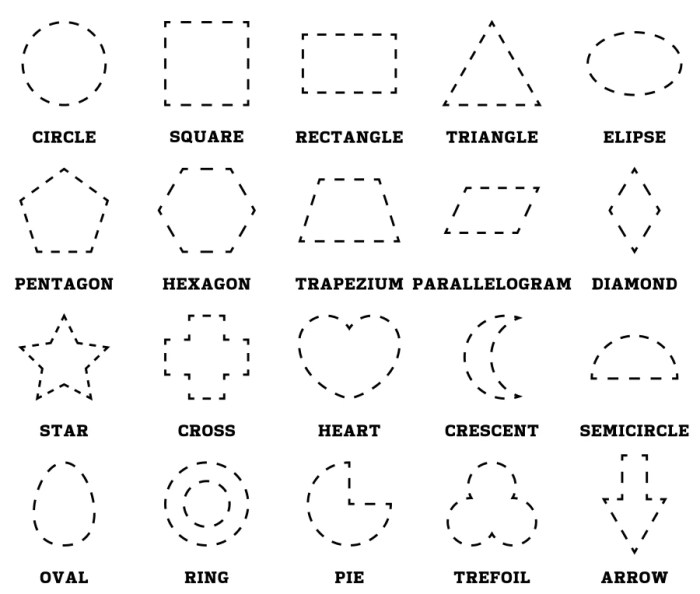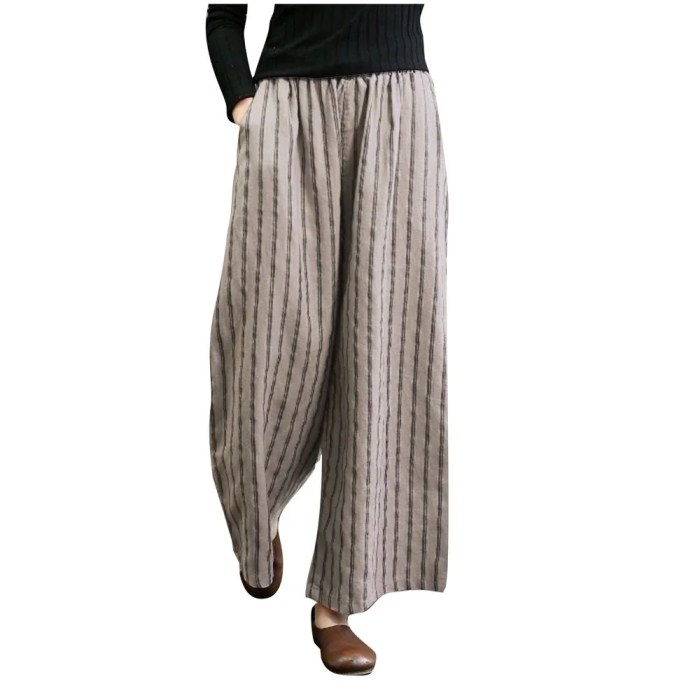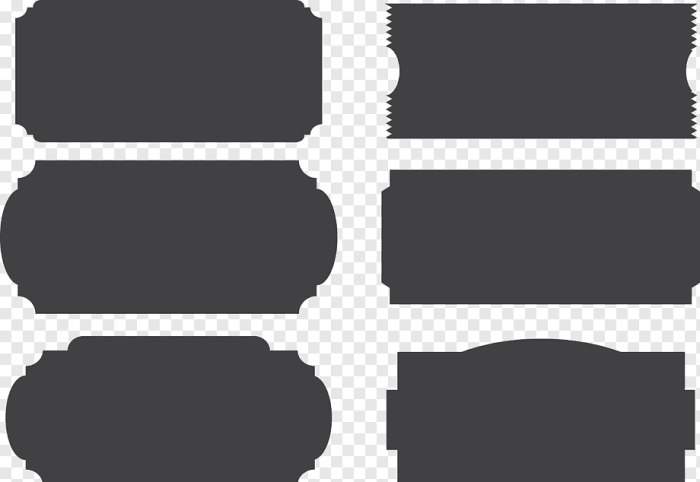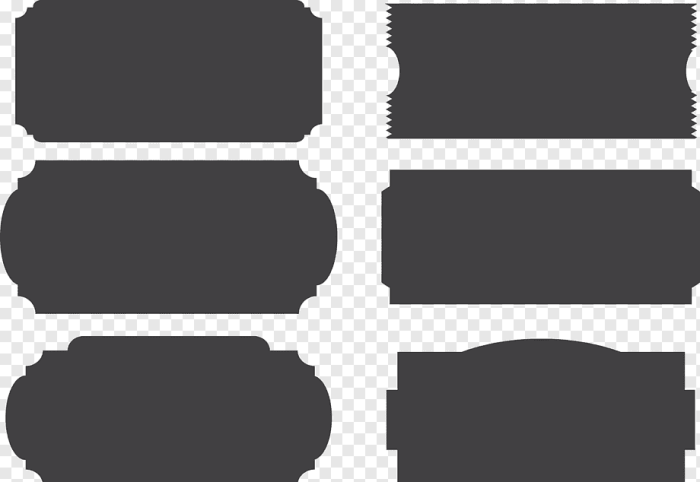Ever wondered why some outfits just -work* on you, while others feel like a total fashion fail? It’s all about drape, baby! Drape is the way fabric falls on your body, and understanding how it interacts with your shape is the key to unlocking a wardrobe that makes you feel like a total rockstar.
This guide dives deep into the world of drape, exploring everything from fabric types to styling techniques. We’ll break down the science behind how different drapes flatter different body shapes, and show you how to use drape to accentuate your best features and minimize those you’d rather keep under wraps.
Get ready to slay your style game!
Understanding Drape and Shape

Drape and shape are essential elements in fashion design that contribute significantly to the overall aesthetic and appeal of a garment. Understanding how fabrics drape and how to manipulate them to flatter different body shapes is crucial for creating flattering and stylish outfits.
Fabric Drape
The way a fabric drapes is determined by its weight, weave, and fiber content. Fabrics with a loose weave, such as silk chiffon or georgette, drape softly and flowingly, creating a fluid and graceful silhouette. Heavier fabrics, such as velvet or brocade, tend to drape more structured and hold their shape, resulting in a more dramatic and defined look.
- Lightweight Fabrics: These fabrics, like silk chiffon or georgette, drape softly and flowingly, creating a fluid and graceful silhouette. They are often used for evening wear, dresses, and blouses.
- Medium-Weight Fabrics: These fabrics, like cotton poplin or linen, drape moderately and can be used for a variety of garments, from casual to dressy.
- Heavyweight Fabrics: These fabrics, like wool or velvet, drape more structured and hold their shape. They are often used for coats, jackets, and pants.
Body Shapes
There are various body shapes, and each shape has unique characteristics that can be flattered by different types of drapes. Understanding these shapes allows designers to create garments that enhance a person’s natural beauty.
- Hourglass: This shape is characterized by a defined waist, balanced bust and hips, and a curvy silhouette. Drape can be used to emphasize the curves and create a feminine look.
- Rectangle: This shape is characterized by a straight line from shoulders to hips, with a less defined waist.
Drape can be used to create the illusion of curves and define the waistline.
- Inverted Triangle: This shape is characterized by broader shoulders than hips, with a smaller waist. Drape can be used to balance the shoulders and create a more streamlined silhouette.
- Pear: This shape is characterized by wider hips than shoulders, with a smaller waist. Drape can be used to accentuate the waist and create a more balanced look.
- Apple: This shape is characterized by a larger bust and stomach area, with a less defined waist.
Drape can be used to create a more defined waist and minimize the stomach area.
Drape and Body Shape
The way a fabric drapes can have a significant impact on how a garment flatters a particular body shape. For example, a flowing, lightweight fabric like silk chiffon can be used to create a flattering silhouette on an hourglass figure, emphasizing the curves and creating a feminine look.
On a rectangle figure, a structured fabric like wool can be used to create the illusion of curves and define the waistline.
Techniques for Drape Styling
Drape styling is all about creating a visually pleasing and flattering silhouette by manipulating the flow and movement of fabric. It’s like giving your clothes a personality, a graceful sway, and a touch of elegance. To master the art of drape styling, you need to understand the magic of fabric choice and the techniques that can transform a garment from flat to fabulous.
Drape Your Shape is all about that effortless chic, you know? Like, you’re not trying too hard, but you still look amazing. And to nail that vibe, you gotta have the right props. Think a Modern Luxury Decorative Coffee Table Book Ideal for Styling & Staging Shelves Living Room or Office Neutral Aesthetic Off-White & Beige Tones …
Faux Book for Decoration 320 Lined Pages on your coffee table. It’s the perfect way to add that touch of sophistication without being over-the-top. Drape Your Shape, babe, it’s all about owning your style.
Choosing Fabrics for Drape Styling
The right fabric is the foundation of any successful drape style. Different fabrics drape differently, and choosing the right one can make all the difference in how your garment hangs and moves. Here are some tips for selecting fabrics that drape well for different garments:
- For flowing and dramatic drapes, opt for lightweight and fluid fabrics like silk, chiffon, or georgette. These fabrics will create a soft and ethereal effect, perfect for evening gowns, maxi dresses, or flowing skirts.
- For structured drapes, choose fabrics with more body and weight, such as satin, velvet, or brocade. These fabrics will create a more defined and dramatic silhouette, ideal for jackets, coats, or tailored pants.
- For casual drapes, go for fabrics with a bit of stretch and drape, like jersey, knit, or linen. These fabrics will create a comfortable and relaxed look, perfect for everyday wear like t-shirts, dresses, or pants.
Techniques for Creating Different Drape Effects
Drape styling is all about playing with the fabric and manipulating it to create different effects. Here are some techniques that can be used to create different drape styles:
- Pleating:Pleating is a classic technique that adds volume and structure to fabric. It can be used to create a variety of drape effects, from soft and flowing to sharp and dramatic. For example, a pleated skirt will have a fuller and more voluminous look compared to a straight skirt.
- Gathering:Gathering is a technique that involves pulling fabric together to create a soft and flowing effect. It’s often used to create a romantic or whimsical look, and can be used on sleeves, necklines, or even the entire garment.
- Draping:This technique involves shaping fabric directly on the body to create a custom fit and a unique drape. It’s often used for evening gowns, cocktail dresses, and other formal garments.
- Layering:Layering different fabrics and textures can create a dynamic and interesting drape effect. For example, layering a sheer chiffon top over a silk slip dress can create a layered and flowing look.
Drape Styles for Different Body Shapes
The right drape style can accentuate your best features and minimize any areas you’d like to downplay. Here’s a visual guide showcasing various drape styles with corresponding body shapes:
Hourglass:A flowing A-line dress with a cinched waist will highlight your curves, while a draped top with a V-neckline will accentuate your bust and shoulders.
Pear:A wrap dress or a skirt with a flowing A-line will balance your hips and create a more balanced silhouette. A draped top with a high neckline will draw attention to your shoulders and upper body.
Drape Your Shape is all about celebrating the unique beauty of every body, and that includes honoring the rich cultural heritage of Black and Brown women. If you’re looking for a way to unwind and express your creativity while celebrating Black beauty, check out this awesome Black Woman Coloring Book.
It’s a total vibe, with intricate designs and a focus on the beauty and culture of Black and Brown African American women. After you’ve colored your way to zen, get back to rocking those curves and showing off your shape in all its glory!
Apple:A draped top with a V-neckline or a flowing empire waist dress will create a more balanced silhouette and draw attention to your legs.
Drape Your Shape is all about rocking your unique style, and sometimes that means stepping outside the box. You know, like how some of the greatest artists did! Want to learn more about the hidden details and stories behind famous paintings?
Check out Masterpieces of Art Explained Discover famous artworks and their finer details (Looking at Art) , it’s like a crash course in art history but way more fun! Just like those artists, you can be bold and experiment with your own personal style, so go ahead and drape your shape with confidence!
Rectangle:A wrap dress or a skirt with a flowing A-line will create curves and a more balanced silhouette. A draped top with a V-neckline will accentuate your shoulders and upper body.
Inverted Triangle:A draped top with a scoop neckline or a flowing A-line skirt will balance your shoulders and hips.
Step-by-Step Guide on Draping Techniques
Here’s a step-by-step guide on draping techniques for specific garments:
- Draping a Skirt:
- Start with a basic skirt pattern or a piece of fabric that is twice the length of your desired skirt length.
- Fold the fabric in half and drape it over a dress form or a mannequin.
- Pin the fabric in place at the waistline, creating a smooth and even line.
- Drape the fabric around the hips and legs, creating the desired shape and fullness.
- Continue to pin the fabric in place, adjusting the drape as needed.
- Once you’re satisfied with the drape, remove the fabric from the dress form and cut out the skirt shape.
- Sew the skirt together, leaving an opening for the zipper or the waistband.
- Draping a Top:
- Start with a basic top pattern or a piece of fabric that is twice the width of your bust measurement.
- Fold the fabric in half and drape it over a dress form or a mannequin.
- Pin the fabric in place at the shoulders, creating a smooth and even line.
- Drape the fabric around the bust and waist, creating the desired shape and fullness.
- Continue to pin the fabric in place, adjusting the drape as needed.
- Once you’re satisfied with the drape, remove the fabric from the dress form and cut out the top shape.
- Sew the top together, leaving an opening for the neckline and the armholes.
Drape Your Shape in Fashion
Think of drape as the art of using fabric to sculpt your silhouette, creating a harmonious blend of form and flow. It’s all about how the fabric falls and moves, adding a touch of magic to your look. Whether you’re rocking a flowy maxi dress or a structured blazer, understanding drape can help you create outfits that flatter your unique shape and make you feel confident and stylish.
Drape Styles for Different Occasions
Drape styles can be adapted to suit a wide range of occasions, from casual outings to formal events. Here’s a look at some popular drape styles and how they can elevate your look:
- Casual Drape: Think flowy maxi dresses, relaxed blouses, and soft cardigans. These styles are perfect for everyday wear, offering comfort and effortless style. The soft, fluid fabric creates a relaxed and approachable vibe, ideal for running errands or meeting friends for coffee.
- Semi-Formal Drape: This category encompasses styles like draped skirts, wrap dresses, and blouses with intricate draping details. These outfits are versatile and can be dressed up or down, making them suitable for events like cocktail parties, weddings, or even a fancy dinner date.
The combination of structure and flow creates a sophisticated and elegant look.
- Formal Drape: Formal occasions call for gowns and dresses with dramatic draping. Think flowing fabrics like silk or velvet, intricate pleating, and strategically placed folds that create a sense of grandeur and elegance. These styles are perfect for red carpet events, galas, and other black-tie affairs.
Book Review: “The Drape Book” by [Author Name]

“The Drape Book” by [Author Name] is a comprehensive guide to understanding and mastering the art of drape styling. The book delves into the principles of drape, exploring how fabrics behave and how they can be manipulated to create flattering and aesthetically pleasing silhouettes.
Drape Your Shape is all about rocking your unique style, and it’s totally about feeling confident in your own skin. You can find tons of inspiration and tips on how to style your body type Download And Listen Here to learn more about how to level up your fashion game and feel like a total rockstar.
Drape Your Shape is all about embracing your individual vibe and owning it, so go get inspired and slay!
The author’s approach to drape and shape analysis is a key aspect of the book, providing readers with a framework for understanding how different fabric types and drape characteristics impact the overall look and feel of a garment.
The Author’s Approach to Drape and Shape Analysis
[Author Name] presents a systematic approach to drape analysis, emphasizing the importance of understanding fabric properties. The book highlights the key factors that influence drape, including:
- Fabric Weight:Lighter fabrics tend to drape more softly, while heavier fabrics create more structured silhouettes.
- Fabric Weave:The weave of a fabric affects its drape. For example, a plain weave fabric will drape differently than a twill weave fabric.
- Fiber Content:Natural fibers like silk and wool have different drape characteristics than synthetic fibers like polyester or nylon.
- Yarn Twist:The amount of twist in the yarn influences the drape of the fabric. More twist creates a tighter fabric with less drape.
- Fabric Finish:Finishes like pleating, crinkling, or embossing can alter the drape of a fabric.
The book goes beyond simply describing fabric properties, offering practical advice on how to manipulate drape to create different effects. It delves into techniques like:
- Draping:The book provides step-by-step instructions for draping fabric on a dress form, allowing readers to experiment with different shapes and silhouettes.
- Pattern Cutting:The author explores how to create patterns that take advantage of the drape of specific fabrics.
- Sewing Techniques:The book emphasizes the importance of using appropriate sewing techniques to enhance the drape of a garment.
Strengths and Weaknesses of the Book
“The Drape Book” is a valuable resource for fashion enthusiasts, offering a wealth of information on drape and shape analysis. However, like any book, it has its strengths and weaknesses.
Strengths
- Comprehensive Coverage:The book covers a wide range of topics related to drape, from basic fabric properties to advanced draping techniques.
- Clear and Concise Language:The author’s writing style is clear and concise, making the information accessible to readers with varying levels of experience.
- Practical Applications:The book provides numerous examples and illustrations, demonstrating how to apply the concepts discussed in real-world scenarios.
- Detailed Instructions:The step-by-step instructions for draping and pattern cutting are well-written and easy to follow.
Weaknesses
- Limited Focus on Specific Fabric Types:While the book provides general information on fabric properties, it could benefit from a more in-depth analysis of specific fabric types and their drape characteristics.
- Lack of Visuals:The book could benefit from more visual aids, such as photographs and diagrams, to further illustrate the concepts discussed.
- Limited Coverage of Contemporary Trends:The book primarily focuses on traditional draping techniques and could benefit from a discussion of contemporary draping trends and innovations.
Benefits for Fashion Enthusiasts
“The Drape Book” offers numerous benefits for fashion enthusiasts, regardless of their skill level.
- Improved Understanding of Fabric Properties:The book provides a foundation for understanding how different fabrics behave, which is essential for making informed fabric choices.
- Enhanced Drape Styling Skills:The book teaches readers how to manipulate drape to create flattering and aesthetically pleasing silhouettes.
- Inspiration for Creative Projects:The book provides a wealth of ideas and inspiration for fashion design and sewing projects.
- Greater Confidence in Fabric Selection:By understanding the principles of drape, readers can develop a greater sense of confidence in selecting fabrics for their projects.
Last Recap

So, ditch the fashion faux pas and embrace the power of drape! By understanding how fabric falls and how it interacts with your body, you can unlock a world of flattering silhouettes and create a wardrobe that’s both stylish and confidence-boosting.
It’s time to take your style from “meh” to “OMG, you look amazing!” Go forth and drape your shape with fierce fashion confidence!
Questions and Answers
What are some common drape styles?
Think flowing, billowing fabrics like chiffon or silk for a romantic vibe, or structured, crisp fabrics like linen or cotton for a more tailored look. Experiment with different textures and weights to see what flatters you best.
How do I know if a fabric drapes well?
Hold the fabric up and let it fall naturally. If it hangs smoothly and doesn’t bunch up too much, it’s a good drapey fabric. You can also test it by draping it over your arm or a chair.
Is there a specific drape for every body shape?
Not necessarily! The key is to find drapes that complement your individual shape and create a flattering silhouette. For example, if you have a curvy shape, you might want to look for drapes that accentuate your waist and create a more defined shape.

